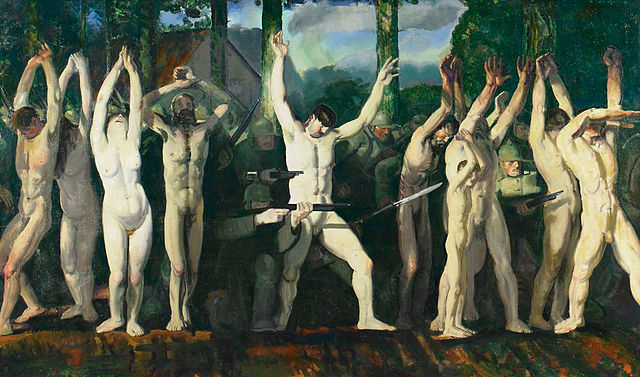A human shield is a non-combatant who either volunteers or is forced to shield a legitimate military target in order to deter the enemy from attacking it.
Human shield war postcard by Sergey Solomko
The Barricade by the American artist George Bellows, inspired by an incident in August 1914 where German soldiers used Belgian civilians as human shields
The Geneva Conventions are international humanitarian laws consisting of four treaties and three additional protocols that establish international legal standards for humanitarian treatment in war. The singular term Geneva Convention colloquially denotes the agreements of 1949, negotiated in the aftermath of the Second World War (1939–1945), which updated the terms of the two 1929 treaties and added two new conventions. The Geneva Conventions extensively define the basic rights of wartime prisoners, civilians and military personnel; establish protections for the wounded and sick; and provide protections for the civilians in and around a war-zone.
A facsimile of the signature-and-seals page of the 1864 Geneva Convention, which established humane rules of war
A Red Cross poster from the First World War
The original document in single pages, 1864





